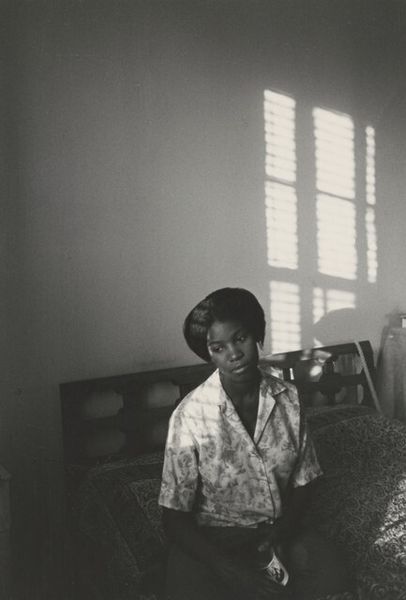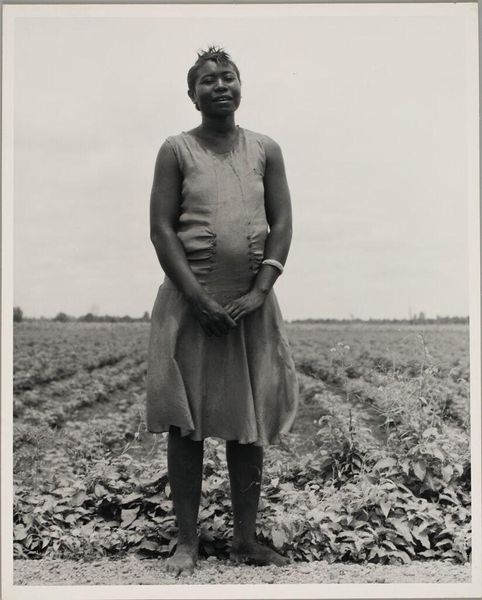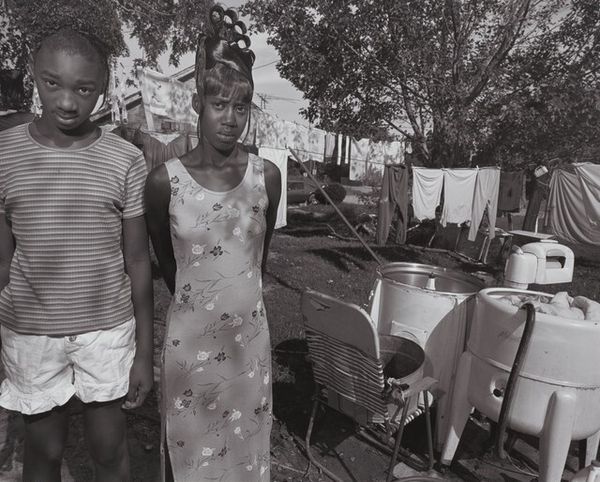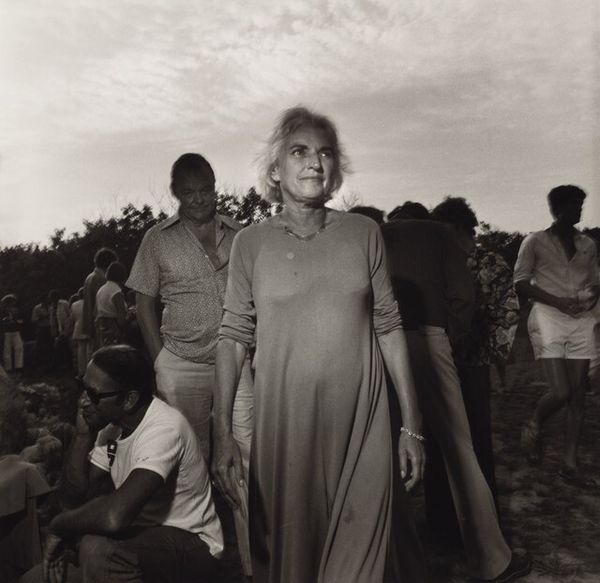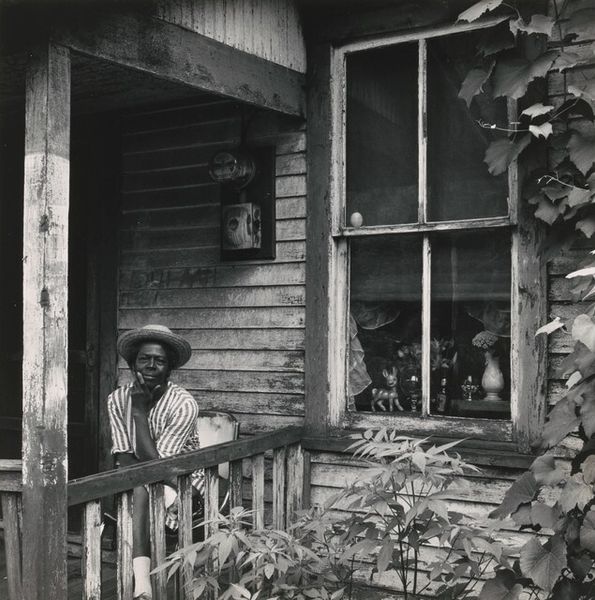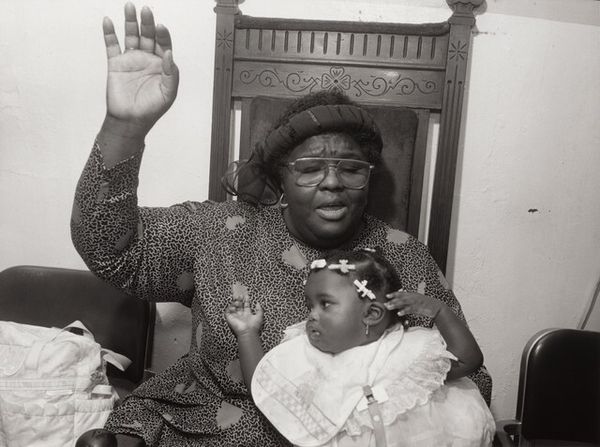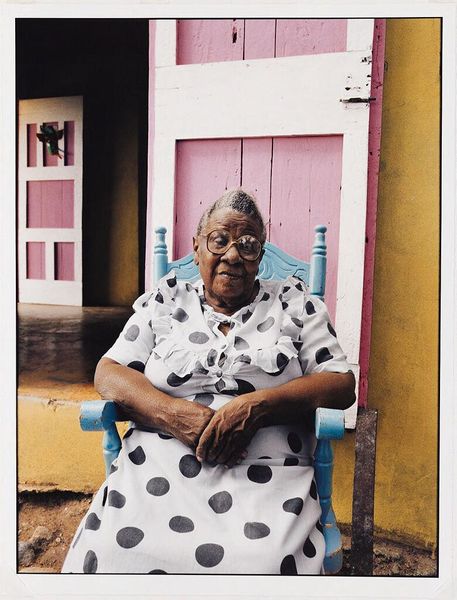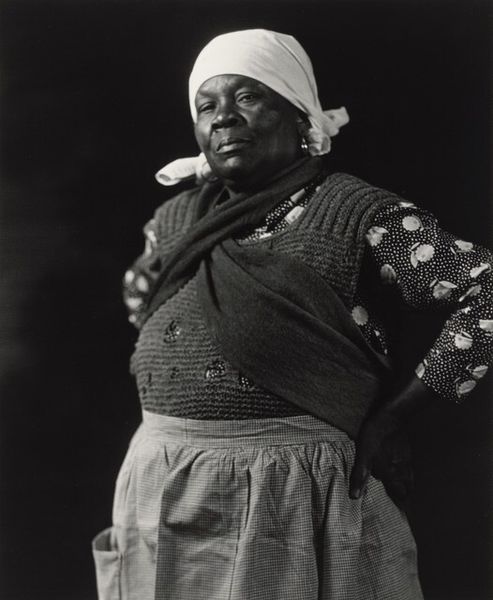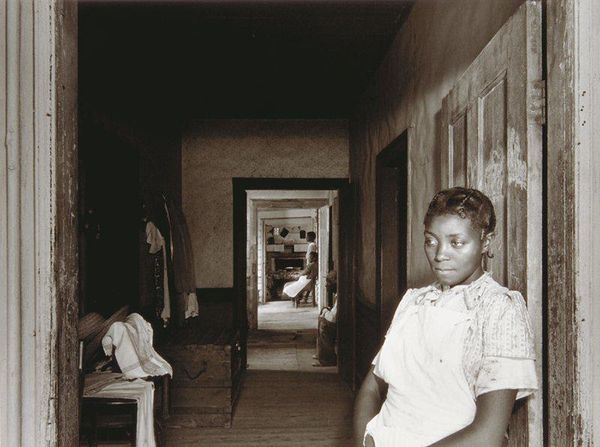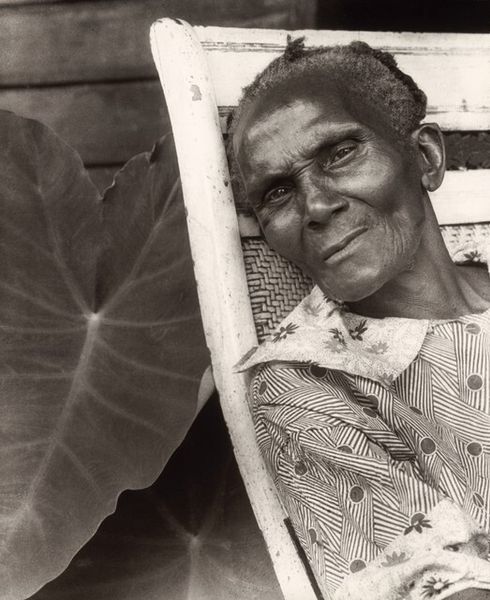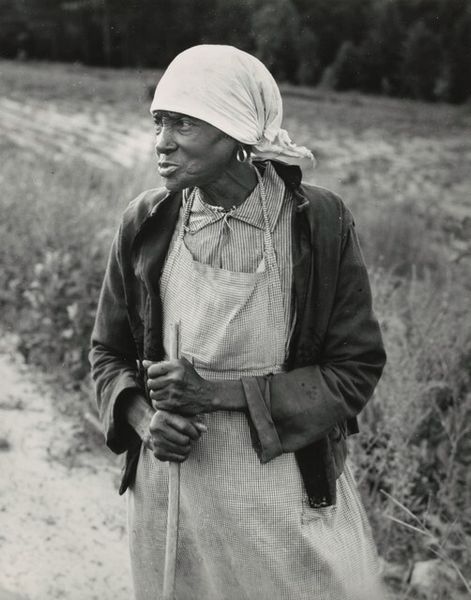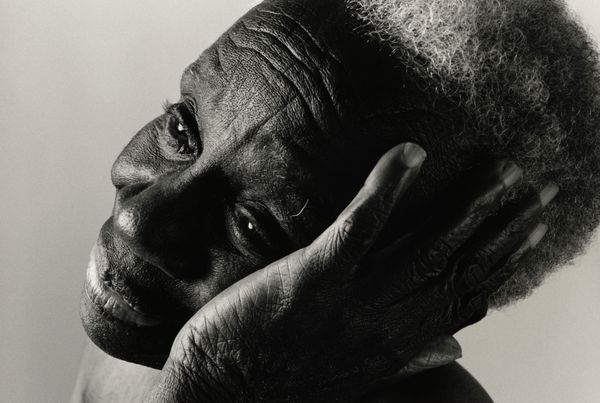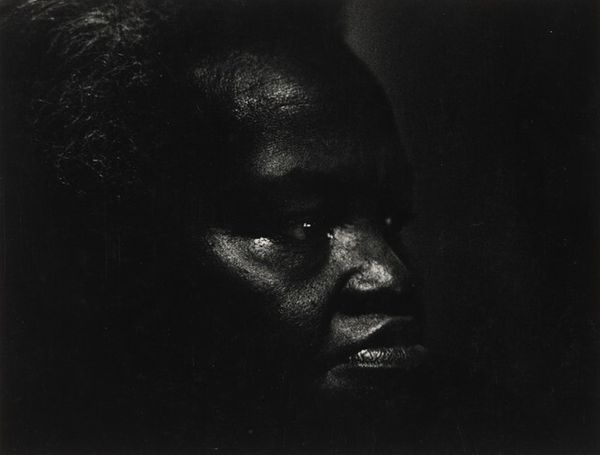
photography, gelatin-silver-print
#
black and white photography
#
photography
#
black-arts-movement
#
black and white
#
gelatin-silver-print
#
monochrome photography
#
monochrome
#
realism
Dimensions: image: 21.5 × 29.2 cm (8 7/16 × 11 1/2 in.) sheet: 27.94 × 35.56 cm (11 × 14 in.)
Copyright: National Gallery of Art: CC0 1.0
Curator: Louis Draper's 1971 gelatin-silver print, "Fannie Lou Hamer, Mississippi", immediately strikes me with its resolute simplicity. Editor: It’s incredibly balanced, visually. The composition, predominantly shades of black and white, seems to adhere to classical portraiture principles, drawing the eye directly to Hamer’s expression. Curator: Draper, deeply involved with the Kamoinge Workshop during the Black Arts Movement, intended his photography to serve as a counternarrative, documenting everyday Black life and activism, far removed from mainstream portrayals. Fannie Lou Hamer was, of course, a significant Civil Rights leader. Editor: Yes, but structurally, what intrigues me is the diagonal line of the path in the background bisecting the space, almost mirroring her determined gaze toward…somewhere just beyond our view. The path seems both literal and symbolic. Curator: Precisely. The setting reinforces her position—out in the open, in rural Mississippi—emphasizing both vulnerability and strength. She lived in a time where existing and advocating was not without challenge and fear. Editor: Consider the materiality too; the velvety texture achieved with the gelatin-silver print, allows a striking contrast, making her patterned blouse almost a graphic element that draws the eye, again pointing back to the focus, her face. Curator: Absolutely. Her face, while lined with the experience of struggle, has an undeniably calm and unwavering power, it reflects both weariness and perseverance. The unflinching gaze speaks volumes about Hamer's dedication. Her work as a voting rights activist had far-reaching consequences. Editor: The photo’s realist aesthetic rejects artifice. No theatrics; no staging. The image's realism only strengthens the underlying emotion carried out through light, shadow, and the subject's positioning within the frame. It seems so clear—we, as viewers, are confronted with truth, rather than presented a biased image. Curator: Exactly. What initially read as simple reveals a deeply considered and poignant representation, one that places Hamer, not as a figure of tragedy or victimhood, but one of steadfast resistance. It's an effective encapsulation of power within ordinary moments. Editor: It's the quiet strength inherent in the framing and the textures—a formal meditation which subtly reveals her presence. The print is indeed testament to photography’s capacity to carry significant socio-political weight with an aesthetic voice.
Comments
No comments
Be the first to comment and join the conversation on the ultimate creative platform.
